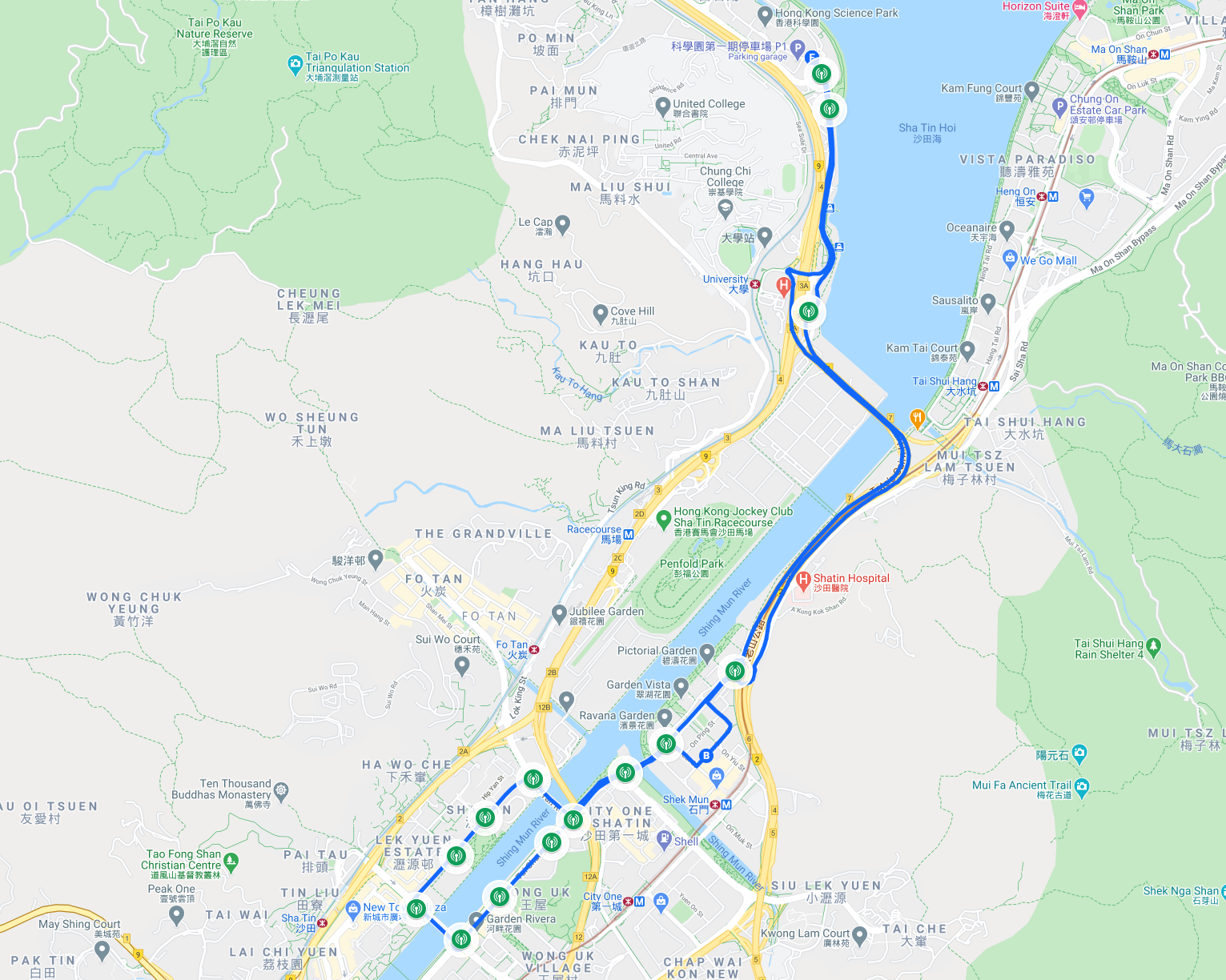1
What is ASTRI’s Cellular Vehicle-to-Everything (C-V2X) Technology?
- Cellular Vehicle-to-Everything (C-V2X) technology refers to the low-latency communication system between vehicles and vehicles, vehicles and pedestrians, vehicles and road infrastructure, and vehicles and networks. Through the real-time information transmission in the Internet of Vehicles system, people, vehicles and road infrastructure are connected and coordinated, and road users receive reports and warnings in real time to enhance road safety and assist driving. At the same time, the C-V2X technology can be applied to real-time traffic monitoring, incident management, and route planning to improve traffic efficiency. In the long run, C-V2X can better cooperate with the development of autonomous driving technology, assist autonomous driving in detecting hidden dangers and improve road safety.
2
What is the goal of this project?
- The Hong Kong government proposed in the "Hong Kong Smart City Blueprint" published in 2017 that the government will cooperate with the development of C-V2X technology, with a view to eventually introducing autonomous vehicles that incorporate Internet of Vehicles technology. In the "Hong Kong Smart City Blueprint 2.0" published in December 2020, the government also reiterated that it will support the technology and industry development of C-V2X and autonomous vehicles, with a view to eventually introducing autonomous vehicles equipped with C-V2X.
- ASTRI started to develop C-V2X technology in 2016, and successfully conducted road test at the Hong Kong Science Park for the first time in June 2017.
- In order to comprehensively study the application scenarios of the C-V2X technology on Hong Kong’s roads, and the methodology to plan the network and infrastructure required for the application, ASTRI has been in close contact with the Transport Department from November 2019, through the Innovation and Technology Fund of the Innovation and Technology Commission, to carry out research and test projects related to the C-V2X technology.
- The site of the pilot project is planned to be about 14 kilometers between the Hong Kong Science Park and Sha Tin Town Centre, and the project has received the support of the Sha Tin District Council, Transport Department, Highways Department and other relevant government departments.

3
Why choose Sha Tin?
- Located in Hong Kong Science Park at Sha Tin District, ASTRI was established by the government in 2000 and operated under the supervision of the Innovation and Technology Commission. We started to develop the C-V2X technology in 2016, and successfully conducted a road test at the Hong Kong Science Park for the first time in June 2017. In order to more comprehensively study the application scenarios of the C-V2X technology on Hong Kong’s roads, as well as the required network and infrastructure equipment, this C-V2X project has a planned route which starts from the Hong Kong Science Park at Sha Tin District, along the Shing Mun River, and via Tai Chung Kiu Road to Sha Tin Town Centre, the total length of round route is 14 kilometers, the technology tests will be conducted repeatedly along the road.
- The road section selected for this test covers different road environments in Hong Kong, including highways, roundabouts, intersections with traffic light, pedestrian crossings, etc., which are very suitable for the realization and testing of different connected vehicle road safety application scenarios, and can be applied to the future development of connected vehicle technology.
- If the application of the C-V2X technology is fully deployed in the future, the residents of Sha Tin District can enjoy the benefits in advance.
4
Will the test period cause inconvenience or safety issues to the public?
- We have carried out detailed planning according to the needs of the test project and are absolutely confident that it will not cause inconvenience or safety issues to the residents of the district during the test period.
5
When will the test start? How long is the entire test period?
- The test is expected to start in early 2021 and will last for nine months.
6
What data will the Connected Vehicle system receive and process?
- The test only involves specific test vehicles. The C-V2X system will only receive, process or release information about specific test vehicles, such as vehicle speed, GPS location, direction, braking status, indicator light status, dead fire light status, etc. Other vehicles and pedestrians will not and cannot be connected to the C-V2X system.
7
Will there be radiation problems with connected vehicle roadside equipment?
- The C-V2X test has obtained a permit from the Office of the Communications Administration; it is necessary to ensure that the specifications, information and transmission safety of the telecommunications equipment (roadside equipment and on-board devices) used in the test is in compliance with telecommunications management standards and requirements, and will not affect the citizens.
8
How to ensure the information security and privacy issues of the car networking system?
- The test only involves specific test vehicles, and other vehicles and pedestrians will not and cannot connect to the Connected Vehicle Network system. All C-V2X networking equipment installed on the lamp post does not have any camera, and the Network system, roadside equipment and on-board devices only do real-time information processing and will not store data. The relevant test will only receive, process or distribute information about specific test vehicles, and the relevant information will be processed in real time and will not be stored.
9
The future development direction of C-V2X technology in Hong Kong?
- The Transport Department will refer to the results and effectiveness of the test result to explore how the C-V2X technology can be applied in Hong Kong and propose feasible development directions and consider how to implement such technology in designated public places and roads. At the same time, the Transport Department will refer to the latest developments and experience of regulation of such technology to further enhance the city’s smart mobility competence.
Latest updated: March 2021
